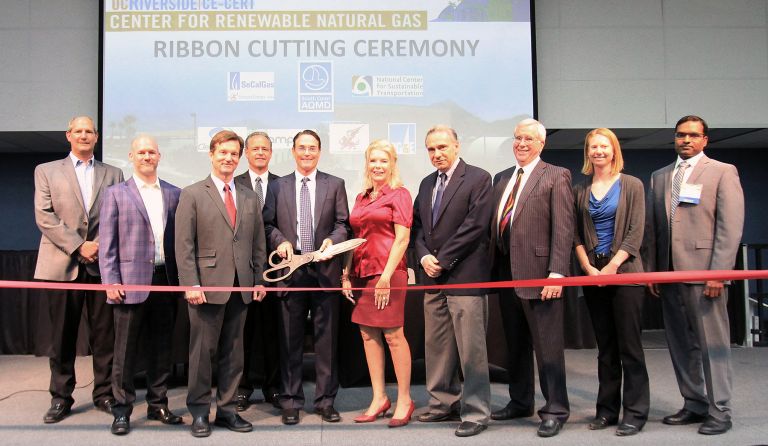
On Wednesday, May 17, UCR and the Southern California Gas (SoCalGas) company, a subsidiary of Fortune 500 company Sempra Energy, announced the opening of a new natural gas research center on campus. The Center for Renewable Natural Gas (CRNG) will solely focus on the research of new technologies that can be used to renew natural gas, making it the first of its kind in the United States.
The center will be part of UCR’s Center for Environmental Research and Technologies (CE-ERT). SoCalGas and smog control agency South Coast Air Quality Management District (SCAQMD) provided the funding for the building of the center.
Executive Officer for SCAQMD Wayne Nastri, stated, “We support the Center at UC Riverside because renewable natural gas deployment in near-zero emission trucks provides a triple win for the region: Green jobs, sustainable transportation and lower tailpipe emissions.”
In a press release by SoCalGas, Vice President of Consumer Solutions and Communications Lisa Alexander, stated, “In California, the agriculture and waste industries produce a great deal of methane that could — and should — be used as renewable gas to heat homes, and fuel power plants and near-zero- emissions trucks.”
Alexander also commended UCR for establishing the center. “We applaud the leadership of the university in establishing an academic center to prove out and advance the technologies needed to develop renewable gas on a large scale in the state,” she stated.
The new center will be led by Dr. Arun Raju. Prior to his work at CE-ERT, Raju was the director of research at Viresco Energy, LLC before proceeding to become the director of technology development for Combustion Association, Inc. In addition to being the head of CRNG, Raju is also an assistant research engineer in UCR’s Bourns College of Engineering.
The research will primarily focus on creating a higher yield of renewable gas, better technology for storing renewable energy, creating technologies than can be used in high-emission vehicles, such as trucks, marketing issues and the creation of possible sites for various renewable gas projects.
According to the CE-ERT website, “The Center is conducting experimental and modeling work to identify optimal RNG (renewable natural gas) production pathways, scenarios and associated requirements.”
With natural gas being produced by decomposing organic waste, agriculture, water treatment and many other sources, California has the potential of using renewable natural gas to not only reduce the methane buildup that causes the greenhouse effect, but to potentially reduce around 75 percent of smog produced by diesel fuel. According to CRNG, renewable natural gas has a carbon impact that is around 90 percent less than conventional fuels. This renewable energy can be delivered using already existing infrastructure.








